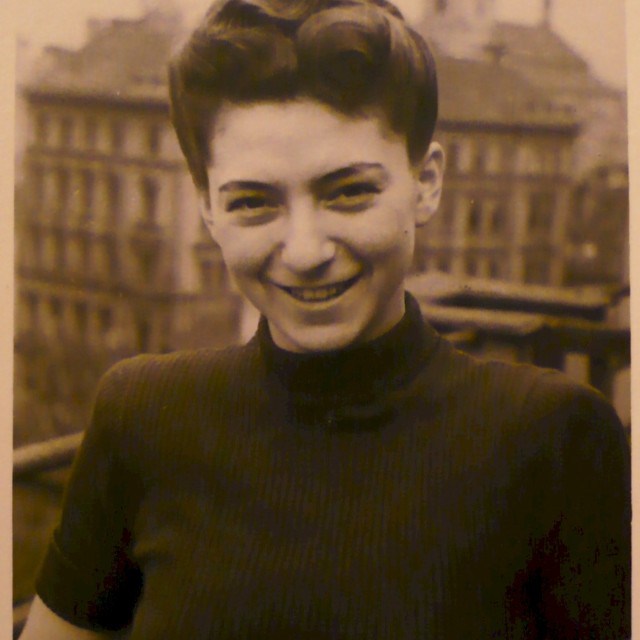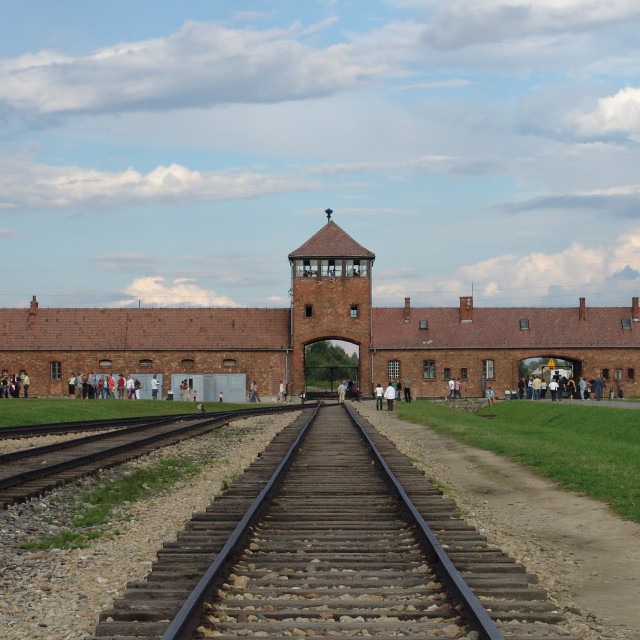He Looked Like a Dance Master
Helena Krouská describes the arrival to Osvětim: “Darkness, spotlights, guards, prisoners and dogs running around. Despite that we still believed that we are going there to work. We started to get out of the train. As now I know, there was standing Dr. Mengele – in a hat, handsome officer, looking like an elegant dance master who conducts polonaise. His arms were just showing to the left, to the right, to the left, to the right. And a loudspeaker was saying: ‛Mothers with children, the old, the ill and people incapable of work to the right. The work capable to the left…’” To go to the right meant to go to the gas chamber – Helena Krouská got to the left side group. “There were about two hundred women in a big hall. We saw our men behind a glass wall and somebody said: ‛These are our men.’ That was the last time I saw my husband. I remember a woman prisoner that approached to us and asked us: ‛Did the children from Terezín came with you?!’ We wanted to please her and said: ‛Yes, but they went to the other side.’ And she started to yell: ‛Look at those chimneys, to the fire and the smoke. These are my children!’ And for the first time I heard what was happening in Auschwitz.”
Hodnocení
Abyste mohli hodnotit musíte se přihlásit!
Trasy
Příběh není součastí žádné trasy.
Komentáře

Helena Krouská (born Lamplová)
Helena Krouská, born Lamplová, was born in September 1921 in a Jewish family in Znojmo. Her father Josef Lampl was a veterinarian and an important member of the Moravian chapter of B'nai B'rith. In February 1938, her mother, Anna, died of cancer when she was only 42 years old. In the same year, after the German occupation of Austria, most of her closest relatives were living in the German sphere of influence. After the occupation of the Sudetenland, the rest of the family had to move from Znojmo to Moravské Budějovice. Soon after, her sixteen-year-old brother František left for Palestine in a group of children with an emigrant passport. In April 1942, her father Josef committed suicide in a Gestapo office in a hopeless situation after being interrogated. Helena and her grandparents were deported to the Terezín ghetto soon after. While in Terezín she married MUDr. Jiří Ganz. In October 1944, she left with him in a transport for Auschwitz-Birkenau, and shortly after she continued from there to the labour camp Oederan in Sachsen. She returned to Terezín during an evacuation at the beginning of May 1945. Jiří Ganz succumbed to an injury and serious disease in Dachau. After the war, Helena settled in Prague and she married again, to JUDr. Otakar Krouský. Together they are raising two children from his first marriage and their son Jan. The couple maintain close contacts with people who were against the communist regime.













